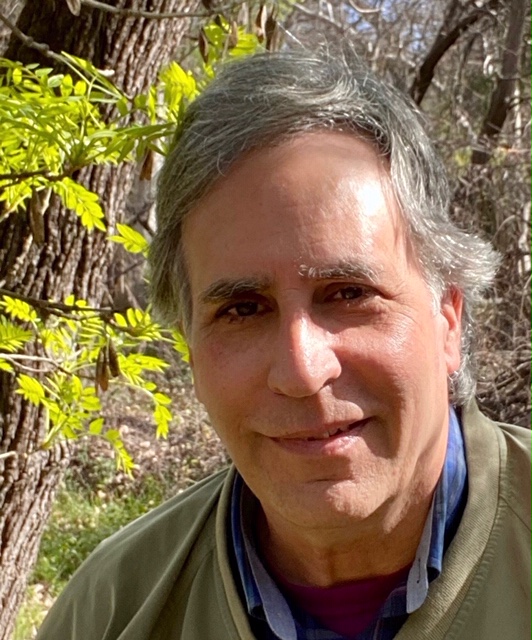Death and the Big Bang
The hillsides and banks of the streams are at their greenest now, just before spring in the valley. A few trees are already in bloom, and the first smells of spring are in the air.
Water rushes by with tremendous momentum, a perpetual motion sweeping everything before it, including one’s thoughts. The mind slows down, and thought becomes a trickle.
The present opens up as the past and the future drop away, and one passes into a true dimension of being. The beauty of the earth is seen again as if for the first time. There is a causeless joy, and with it, strangely, an awareness of death.
After sitting in the last hour of sun beside the stream, the mind is quiet and the heart is at peace, the “peace that passes all understanding.” In this state, I walk by a tree with new white blossoms and tiny budding leaves. The slanting rays of a descending sun are on its branches and blossoms, and for a minute the beauty is so intense that I’m unable to move.
A half hour later I come around a bend on the path to see a pair of ducks in the stream. Their telltale fan-shaped head feathers attest that they are mergansers, a fairly rare and very shy species. The male has a riveting, perfectly contrasting pattern of black and white feathers; the female has variegated brown coloration.
They start to swim downstream as soon as they see me, but cyclists and runners on the park road above the opposite bank send them back upstream. Caught betwixt and between, they swim back and forth for a few minutes, until they finally feel safe enough to float downstream on the current.
Without a trace of morbidity or fear, the human being can contact the omni-present actuality of death. Thought-consciousness keeps death away; it is the greatest fear, the unknowable thing at the end of life. But in truth death is all around us at every moment--we just don’t see it.
Death is inseparable from life. Indeed, death is the ground of life, the source of all energy, matter, and being. Death was there before the Big Bang, and will be there when the universe peters out in God knows how many billions of years.
Creation and death are therefore part of the same thing. Not only creation at the beginning of the universe, but also, more importantly, creation as it is going on every second in every atom everywhere in the cosmos.
Death in the cyclic sense came into being, as did the laws of physics, with the Big Bang. But given that death preceded the Big Bang, and is the eternal ground to which all things return, then is there death as we normally conceive of it?
What came before the Big Bang? Clearly, there was an essence, the ground of all being. Whether we call that death, creation, or God doesn’t matter. What I’m saying is that in touching the ever-present actuality of death while fully and joyfully alive, one feels the presence of creation, which is taking place each moment.
Because the cycle of life and death is integral to the universe as a whole, then death preceded the universe, since the universe has a beginning and will have an end. Therefore the cosmic mind is both identical to the universe, and beyond it. There is no God as a separate ‘Supreme Being’ however, just an infinite and eternally creative mystery.
Universes are born and die, but death is a constant, a perpetually fertile ground. Before energy and matter exploded into existence, there was death. Synonymous with creation, from that source sprang every galaxy, star, and planet.
One often hears how the person who nearly loses his or her life appreciates each day much more. So too, the person who regularly feels the omnipresence of death is much more alive. Looked at this way, death is not to be feared, avoided with averted eyes until the end of life, but understood and allowed to come near, since it is the wellspring of life.
For some timeless minutes, I see into the past and beyond the future, and even into and beyond physical death. As I stride over the damp paths, the setting sun throws patches of light onto the ground through the groves of oaks. Then the treetops are bathed in alpenglow, and finally, streaks of fast-fading color cling to the few wispy clouds.
- Martin LeFevre is a contemplative, and non-academic religious and political philosopher. He has been publishing in North America, Latin America, Africa, and Europe (and now New Zealand) for 20 years. Email: martinlefevre@sbcglobal.net. The author welcomes comments.



 Eugene Doyle: The Fall Of Saigon 1975 - Fifty Years Of Repeating What Was Forgotten
Eugene Doyle: The Fall Of Saigon 1975 - Fifty Years Of Repeating What Was Forgotten Peter Dunne: Dunne's Weekly - Trump's Tariffs Still Pose Risks For New Zealand
Peter Dunne: Dunne's Weekly - Trump's Tariffs Still Pose Risks For New Zealand Keith Rankin: Barbecued Hamburgers And Churchill's Bestie
Keith Rankin: Barbecued Hamburgers And Churchill's Bestie Gordon Campbell: On Why The US Stands To Lose The Tariff Wars
Gordon Campbell: On Why The US Stands To Lose The Tariff Wars Eugene Doyle: Before It’s Too Late - Reimagine New Zealand’s Military Future
Eugene Doyle: Before It’s Too Late - Reimagine New Zealand’s Military Future  Binoy Kampmark: Gender Stunts In Space - Blue Origin’s Female Celebrity Envoys
Binoy Kampmark: Gender Stunts In Space - Blue Origin’s Female Celebrity Envoys